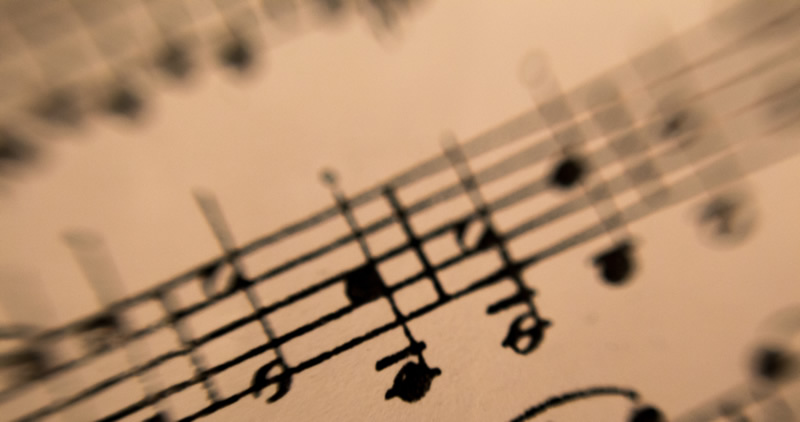Easy Listening
Finding Comfort in Music Therapy

Love me tender, Love me sweet ...
You can hear the song's opening chords drift out the door of one of the infusion rooms. "Beautiful, isn't it?" says John Bartkovich, 82, who's receiving his second dose of chemotherapy for lymphoma.
Megan Gunnell is at his bedside, plucking the strings on a Celtic harp as she talks with Bartkovich. This isn't a private concert. It's music therapy, a service of the Complementary Therapy Program that provides physical, emotional and psychosocial support to patients and families.
As a board-certified music therapist, Gunnell works with about 25 patients a week in the Rogel Cancer Center's infusion and inpatient units. Before each session, she reviews a patient's chart and discusses goals of the therapy with the medical team.
"Music is familiar, it's non-threatening, it's fun and it has tremendous benefit in dealing with negative side effects," said Gunnell, who has a bachelor's degree in music therapy and a master's in social work from the University of Michigan. "When our patients are here, it can be scary and they can be feeling so vulnerable. Music can help address these issues."
Music therapy developed as a profession after World War II when nurses noticed that emotionally and physically traumatized veterans responded well to charity concerts in hospitals. Since then, studies have shown music therapy is effective in reducing anxiety, pain and nausea, while improving communication, emotional expression and quality of life.
The therapy, which is funded by donors at the Rogel Cancer Center, ranges from collaborative activities, like song writing or music improvisation, to simply listening to the music. No previous musical experience is required.
"We are all innately rhythmical because we have a heartbeat," Gunnell said.
Many of the principles of music therapy are based on a concept called "entrainment," which means that your body will synchronize with outside sources of stimulation, like energy or sound. For example, a good resting heartbeat is 60 to 80 beats per minute. If you listen to music around that rate, it'll stay the same; if you listen to faster or slower music, your heart will respond accordingly.
Music therapy also activates both the left and right sides of the brain, stimulating both analytical and creative thinking.
"The auditory sense is one of the strongest we have, but we often don't recognize it because we live in a visual world," Gunnell said. "Song is a predecessor to language. Before babies can talk, they sing. Before they walk, they dance."
Music Therapy is made possible through donations to the Rogel Cancer Centers Patient & Family Support Services Program
